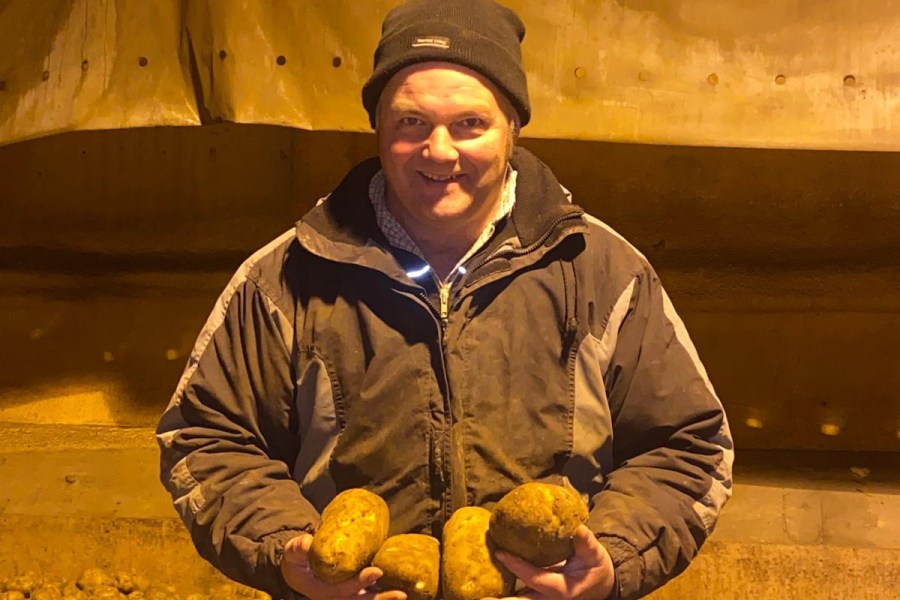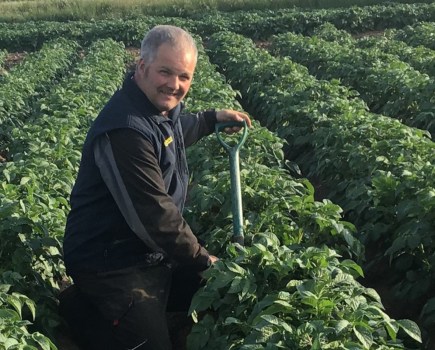“Well, winter landed. We had our share of snow, frost, rain and high winds, but bar a couple of ponded areas, the damage isn’t too serious. I had cause to drive through south Lincolnshire recently, somewhere I usually think to be quite dry. It made me realise that I’m not the only one with sad crops sat in wet fields.
“I mentioned in December that my cover crops looked dreadful but having walked the fields with my spade, I have to report that for all they still look unimpressive, they’ve done their job as far as protecting the soil surface and working some magic underground if nothing else.
“We managed to pass our ACCS & AP inspections back in December with only a couple of minor tweaks to make – I’m pleased to say that it took significantly less time than the year before too. Does it deliver value? Not really. Does it have a place? As far as differentiating our produce from imports, yes it does, but Red Tractor really does need some practical thinking putting into its overhaul if it’s to continue.
“Predictably, potato contract prices started to arrive just before Christmas featuring numbers that didn’t exactly have me reaching for the champagne. The c.10% increase in ware price is welcome far more than the seed cost increase, which wasn’t a surprise.
“My calculator has been busy of late but the end result hasn’t much changed. Historically, we’ve always grown potatoes for more than one customer and that will continue. Each customer brings their own idiosyncrasies to the table, but they all have the same thing in common – just enough price increase to keep us planting. Investment in infrastructure can only be justified in those odd really good high yielding years that seem to get ever further apart, but there’s nowt new there!
“My winter analysis brought few surprises – our lowest risk enterprises include pig keeping, grain drying, hedge cutting, stewardship and roof top solar. Highest risk is root crops as ever, but increasingly winter wheat, particularly that sown later.
“Spring barley has replaced second wheat preceding spring oats on heavy land here, mostly to facilitate a double spring crop to enhance blackgrass control but also to reduce high-cost poor-yielding part-flooded wheat. Good wheat is still the cornerstone of arable farming, but we mustn’t lose focus of the consequential effect of some constituent parts of the rotation.
“Wheat sown after earlier lifted beet here is currently heaven for a flock of Canada geese, and later sown beans seem to be crow paradise – I made the mistake of sowing them a little shallower to get them emerged quicker but said depth seemingly being a smidge less than a crow’s beak. Oops!
“We snatched a gap in the weather last week to lift another third of our sugar beet and I’m pleased to report sugar and dirt respectively are still the right side of the factory averages. Putting the beet in a shed seems a little unnecessary at times but it does help the returns, as does the late delivery bonus. Said shed isabusyone–itseeswet grain, then dry grain, short- term stored potatoes, then beet, seed potatoes and machinery servicing before harvest comes round again.
“My general farming philosophy is that there’s always a better way of doing everything so we’re continually tweaking, mostly in reaction to the seemingly endless challenges that we face at the moment. Some wise advice given to me 30 years ago was ‘Do what you do best, and do it better’. What that translates to is that attention to detail is vital, regardless of the sector.
“We have to get fussier; challenge more when things aren’t right – be that feed mills having a laugh with deductions, chip factory quality control returns, poor seed or late crop movements. Communication is key along with mutual appreciation for the challenges faced by both parties. People deal with people, and any one-sided relationship will be short lived.
“Otherwise, last month we washed and delivered our crisping potatoes, it’s the turn of the chippers next. We had a pig batch change a fortnight ago and got some beet up. Machinery servicing is ongoing but making progress alongside some ditching and drain jetting when weather allows.
“As February rolls by we have spring seed to clean, seed potatoes to chit, cover crops to desiccate, muck to spread, base fertiliser to apply and with all probability, see if our ‘brand new second-hand’ fert spreader entertains the neighbours with stripiness as much as its predecessor did when
we start spreading urea at the end of the month.
“Best crack on, but before we do, next week in this neck of the woods is YAMS – the Yorkshire Agricultural Machinery Show at York. Undoubtedly there’ll be a lot of kit there beyond this peasant’s pocket, but the grub, banter and ‘one day’ thoughts will be good, they always are. It doesn’t do any harm to have a day off occasionally.”
This article was taken from the latest issue of CPM.
For more articles like this, subscribe here.
Sign up for Crop Production Magazine’s FREE e-newsletter here.




